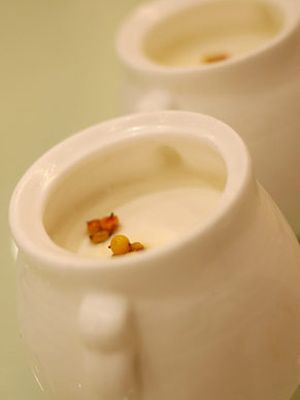Yoghurt is very much in need of preservation. Once it is degraded, it will lead to unhealthy food. Now we will introduce the best way of how to insure the yogurt. We hope to provide some help for everyone's life!
How to preserve yogurt Our living conditions are getting better and better, and more nutritious and delicious foods appear in our lives. Of course, yogurt is one of them. I believe that there are many friends who love to drink yogurt, but if you buy too much at once, save Improper method may make the yoghurt spoiled, so how should this situation be avoided? Xiaobian is about to introduce: how to preserve yoghurt, how to make yoghurt not deteriorate.
(1) One of the methods is to add 70 kg of sucrose and 10 kg of glucose to 100 kg of skim milk (with a milk fat content of less than 3%), followed by homogenization under a pressure of 20 MPa, and then heating to 98° C., holding for 2.5 minutes, and then sterilizing. After sterilizing, cool rapidly to 30°C, add 0.25kgIST starter and stir evenly, and ferment at this temperature. When the pH reached 4.2, the fermentation was stopped and it was a curd yogurt.
When the yoghurt prepared as described above was cooled to 15°C, food grade citric acid was added and the pH was adjusted to 4.1. The mixture was then stirred and 29 kg of citrus pectin and 3.5 kg of orange flavor were added. Citrus pectin solution is prepared by adding 2.2 kg of citrus pectin to 27 kg of water and stirring uniformly. The above mixed material is preferably homogenized through a colloid mill at 20 MPa, and heated to 51° C. for heating during the entire process. The temperature difference between medium and material must not exceed 5°C. When the temperature reaches 51 °C, temperature calibration is performed quickly and accurately. Let it cool down to 32°C. Note that the temperature difference between the cooling medium temperature and the material must not exceed 5°C. When the material is cooled to 32°C and then homogenized again under a pressure of 20 MPa, it is heated to 90°C and held for 30 seconds. Note that stirring should be continued during the heating and holding stages. In addition, when heating and sterilizing, the temperature difference between the heating medium and the material must not exceed 5°C. Finally, the sterilized material is cooled to 22° C. and packaged under warm and aseptic conditions to obtain the final product. At this time, the number of bacteria was examined and the result was 90 cells/mL. If this product is stored at room temperature, there will be no whey separation and flavor deterioration after 6 months.
(2) Method 2 Repeat the operations in 1, but the control parameters need to be slightly changed, that is, when the material is heated to 90 °C, heat for 30 seconds after sterilization, the cooling temperature is changed from 22 °C to 30 °C, and in this Packed under temperature. The resulting product was stored at 15° C. for 6 months. As a result, quality accidents such as no separation of whey and deterioration of flavor occurred.
(3) Method 3 Repeat the operations of Method 1, but no sugar and fruit flavors are added in the formula. After aseptically packaging the product obtained by the above formula, the number of bacteria was 92/mL. After the product is stored for 6 months, no whey is separated and precipitated. The flavor is like a fresh product.
(4) Method 4 The production operation of Method 1 is repeated, but the following process parameters are changed. One is the change of orange flavor to raspberry flavor (also known as raspberry). The second is that during heating up to 51°C and falling from 51°C to 32°C, the temperature difference between the heating medium and the cooling medium and the material is 8°C. After the product prepared according to this process and formula was stored at room temperature for 6 months, neither whey was separated and no precipitate was formed, and its flavor was not changed.
(5) Method 5 The production process of the product remains unchanged, but after the last homogenization, the materials are filled in glass bottles and then sterilized at a temperature of 90°C for 30 seconds. Finally, the product is cooled to room temperature. The products prepared according to this method were stored at room temperature for 6 months without any changes in product taste, and no whey separation or precipitation was found.

Dc 4.5V Co Alarm,Co Detector,Carbon Monoxide Alarm,Carbon Monoxide Detector
Guangdong Isafenest Co.,Ltd. , http://www.isfenest.com